mobile View, to the German Version tap the flag


- Gambier Islands (French: Îles Gambier)
- other name: Mangareva Islands
- possession of France
- part of the French possession of French Polynesia
- own name: Subdivision administrative des Archipel des Îles Gambier
• Flags
• unofficial Flag
• Meaning/Origin of the Flag
• Map
• Numbers and Facts
• History
• Origin of the Country's Name
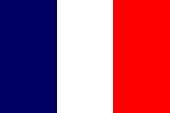
Flag of France,
ratio = 2:3,
Source, by: Corel Draw 4





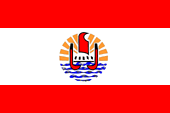
since 1984,
Flag of French Polynesia,
ratio = 2:3,
Source, by: Wikipedia (D)






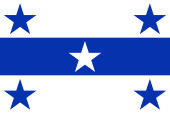
unofficial flag,
Source, by: Wikipedia (D)




The Gambier Islands – as a part of French Polynesia – have officially no own flag. It must be hoisted the French tricolor or additionally, the flag of French Polynesia. However, there exists for local purposes an unofficial flag. It shows three horizontal stripes in white, blue and white (ratio: 1:3:1), in every corner one blue five-pointed star, and in the middle of the blue stipe one white five-pointed star. The colour blue is defined as Pantone 286c. In 1837, a sailor named Armand Mauruc wanted to trade necessarily under a flag of the Gambier Islands (Kingdom of Mangareva), and he convinced King Maputeoa to adopt this flag as national flag. The four blue stars in the corners represent the islands of Mangareva, Taravai, Aukena and Akamaru, and the white star in the center represents Temoe. The color blue stands for the sea and white stands for christianity.
Source:
Wikipedia (D), FOTW

Location:
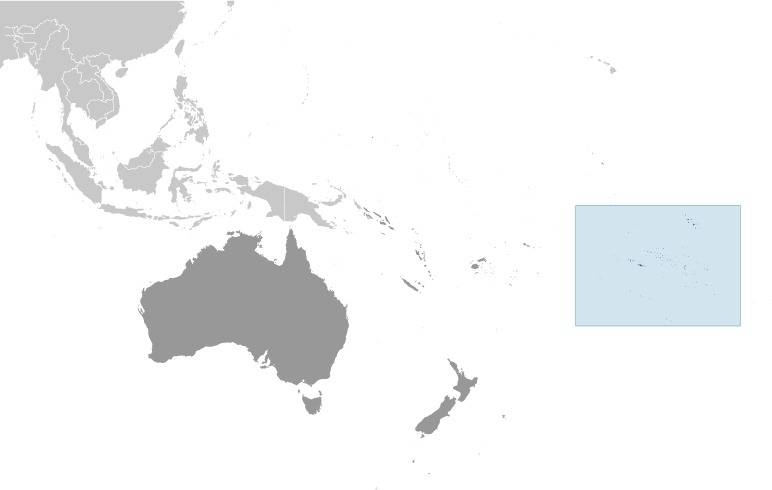
Source: CIA World Factbook
Map of French Polynesia:
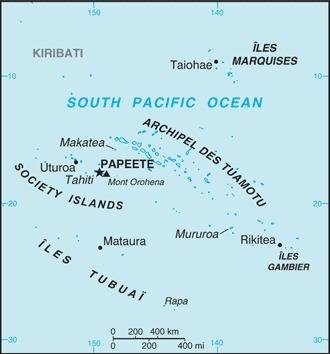
Source: CIA World Factbook
Map of the Country:
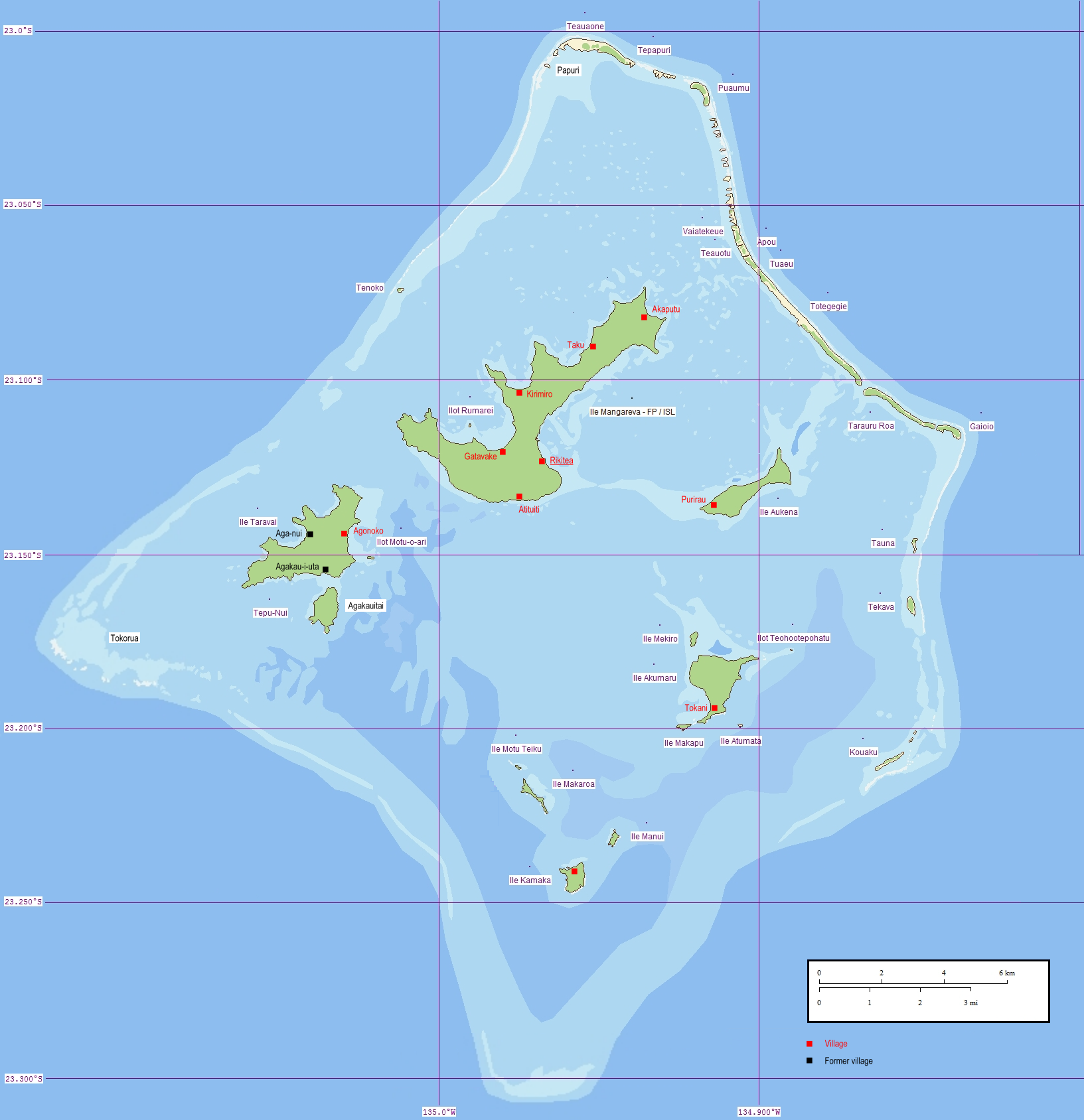
Landkarte/map, Source: Flickr, CC BY 2.0, via Wikimedia Commons,
click to enlarge
Gliederungen von Französisch-Polynesien – Subdivisions of French Polynesia:
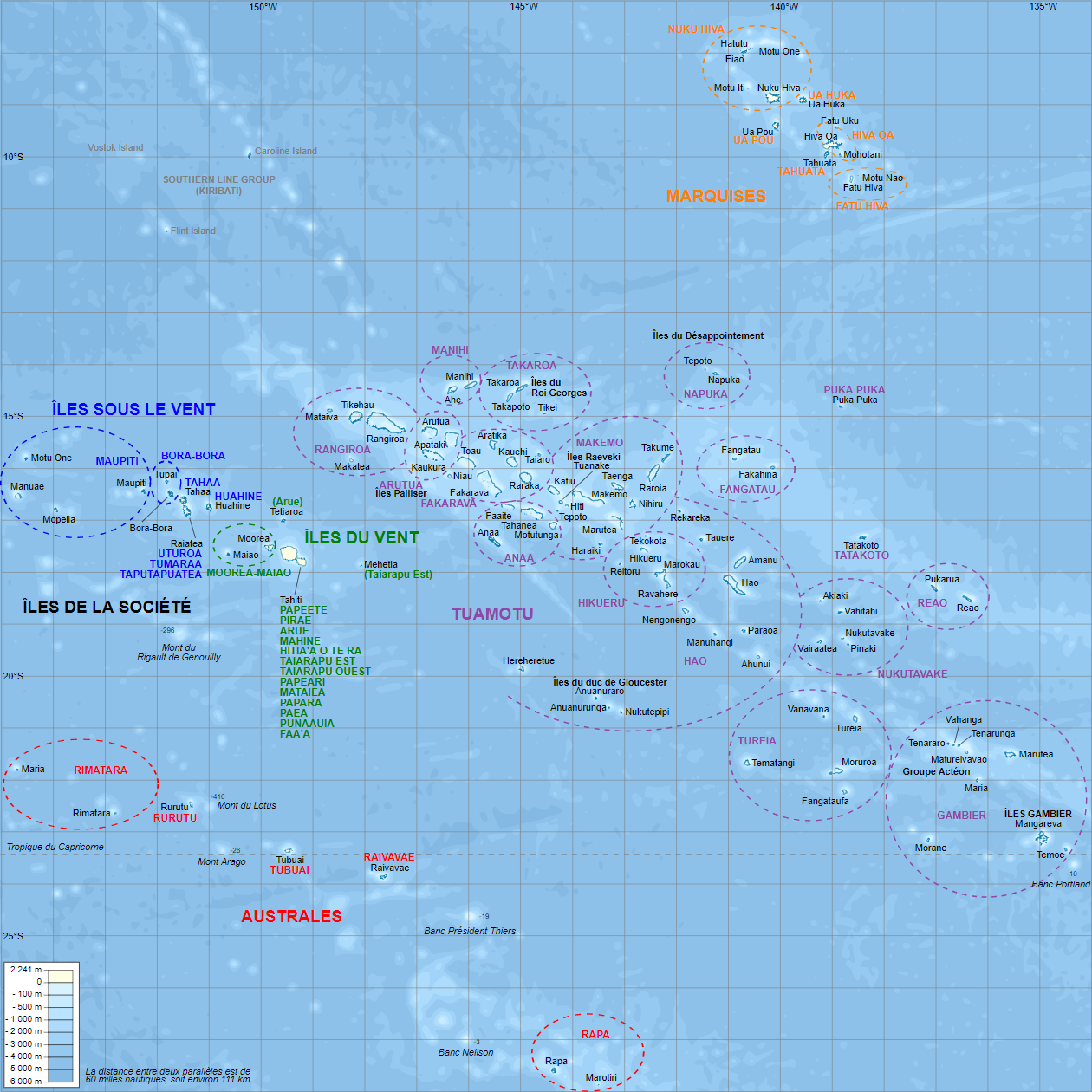
Landkarte/map, Source: By L. Claudel (Sardon - fr:Sardon)
[GFDL or CC BY-SA 3.0], via Wikimedia Commons,
click to enlarge

Area: 12 square miles
Inhabitants: 1.310 (2012)
Density of Population: 109 inh./sq.mi.
Hauptort: Rikitea (on Mangareva), ca. 800 inh.
official Language: French
Currency: CFP-Franc (CFPF) = 100 Centimes,
CFPF = "Franc des Colonies Françaises du Pacifique"
Time Zone: GMT – 9 h
Source: Wikipedia (D)

ca. 1200 A.D. · beginning polynesian settlement
1797 · the British seafarer John Wilson discovers the islands and names them after Captain James Gambier, a descendant of French Huguenots who had supported his expedition
1825 · the British seafarer Frederick William Beechey visits the Gambier Islands
1834 · the Fathers Honoré Laval and François d'Assise Caret begin the christianizing of the islands and establish a kind of Christian theocracy, which could only be terminated in 1871 by the direction of the Bishop of Tahiti
1836 · King Maputeoa is baptized (Gregorio I. Maputeoa)
1857 · death of King Gregorio I., succeeded by his eldest son Gregorio II. Maputeoa
1868 · death of King Gregorio II., he had no heir, the dynasty extinguishes
1871 · France declares the Gambier Islands to a French Protectorate
1881 · France annexes the Gambier Islands, they become a French colony
1903 · establishing of a unified French colonial administration for the Society Islands, Marquesas Islands, Tuamotu Islands, Gambier Islands and Austral Islands under the name "French Polynesia"
Source:
Wikipedia (D), FOTW

The British seafarer John Wilson discovered the islands in 1797 and named them after Captain James Gambier, a descendant of French Huguenots, who had supported his expedition.
Source:
Wikipedia (D)


![]()













